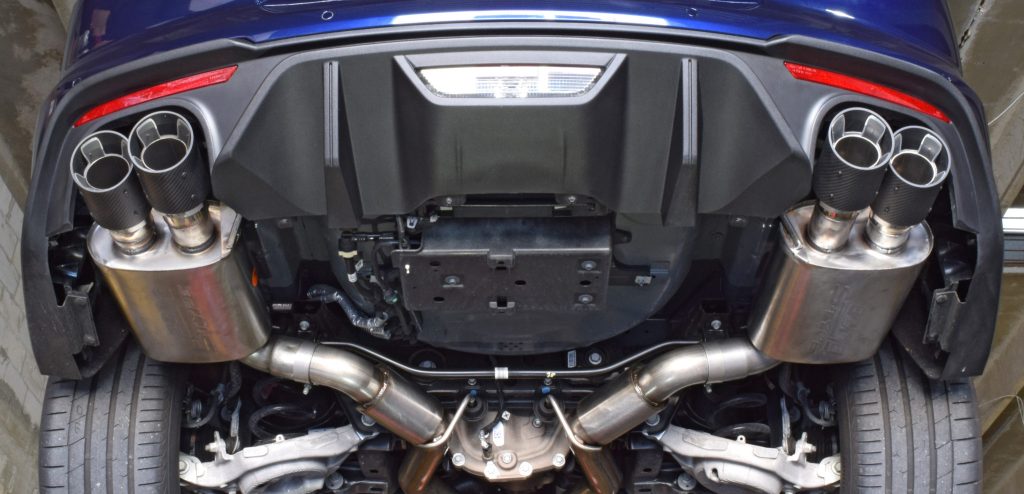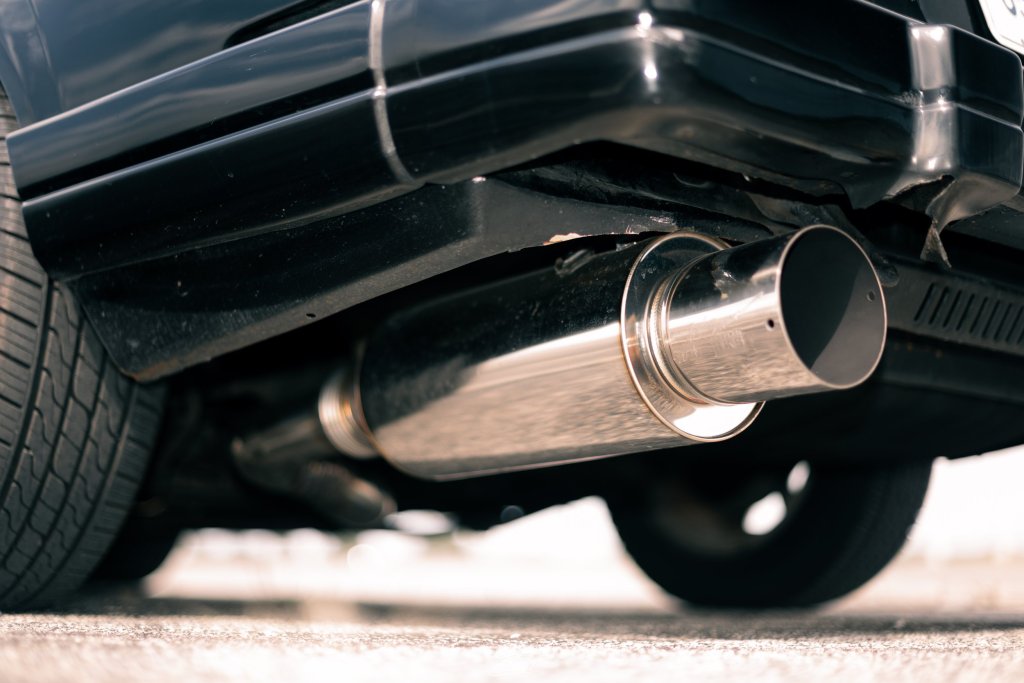Any type of custom part or accessory is able to offer a different set of advantages over an off-the-shelf upgrade. The same can be said for performance exhausts which are almost always an aftermarket purchase. With a custom aftermarket exhaust there’s so much to expect and so much is going to be delivered as you get to choose how the exhaust is going to perform.
Whatever you need from your new automotive exhaust is going to be satisfied by the person welding it and it won’t necessarily cost you a fortune as it would with an OEM one. An aftermarket exhaust is the best way to introduce power without a major overhaul and empty pockets.
Exhaust Materials

Aluminised Steel
When it comes to performance cars a good starting point with aftermarket exhausts starts with aluminised steel ones. Although they are nothing like mild steel exhausts, aluminised steel performance exhausts for a car are great for those of you who are not regulars on the track.
Stainless Steel
With stainless steel exhausts, you get the most common solution as stainless steel makes for quite a durable and strong option. Both when it comes to temperature fluctuations and corrosion, stainless steel exhausts are able to stay in good shape for many years to come without fail.
Titanium
The lightest and strongest material that an exhaust can come made of is titanium. A titanium aftermarket exhaust is the racing enthusiast’s ultimate choice as it can withstand temperature changes the best and last the longest too.
Inconel
If you are serious about racing on a level that not many people are, then you should consider going for an Inconel exhaust. These performance exhausts for a car are mainly used in F1 but for a high enough price they can be made for your track car too. This type of exhaust can withstand even greater temperatures than a titanium one can.
Exhaust Types

Cat-Back
One of the most commonly purchased aftermarket exhausts is a cat-back exhaust. These exhausts are made to replace the components of your existing system starting from the catalytic converter back, hence the name. This is the most cost-effective exhaust since it allows you to improve performance at a reasonable price.
Header-Back
If you want something more freeing in terms of HP then you should go for a header-back system. With a header-back exhaust you are replacing every single part of your exhaust except for one, the turbo. This way you get to choose how much of a performance jump you get but you need to invest a lot of time and money in it.
Turbo-Back
With a turbo-back upgrade, you can replace everything that has to do with the fumes coming from the engine. Keep in mind that turbo-back systems are only able to work with turbocharged cars, if your vehicle has a supercharger or individual throttle bodies then it won’t work.
Other Considerations

Crush vs Mandrel Bent
There are two types of automotive exhaust systems when it comes to the type of bends they can have and those are crush and mandrel bent. A crush-bent exhaust is one that has the bends made in a more traditional way which creates wrinkles or ribs on them.
This affects airflow negatively which is why they’re not common in racing applications. In a race car, it’s best to have a mandrel bent exhaust because it provides smooth airflow as no wrinkles are present on the bends. This is, of course, a more expensive option.
Valved vs Non-Valved
The difference between a valved and a non-valved exhaust is that the former is more versatile. This means that you can open and close the valve to let others hear the true growl of your car or make it purr like a kitten. When on the track, of course, you’ll want the former but when cruising along at highway speeds you’ll love having it closed.
Diameter
The size of an exhaust’s diameter is going to affect airflow too. The smaller the diameter of the piping the more restrictive the system especially if you have a turbocharged engine with large displacement. A larger diameter system will allow for more fumes to travel through but remember that you can easily create exhaust backpressure if you go for too large of a diameter.
Sound
The sound of your exhaust can change with an aftermarket system and you can either go for a louder one or a more muffled exhaust. But If you go for the latter know that you will affect performance in a bad way. It’s better to go for a louder exhaust with a valve so that you can drive both on the street and on track.
Tailpipe Design
The design and placement of the exhaust tips will affect the appearance of your vehicle from the back. Typically the more tailpipes you have the more aggressive the look at the back. You can even have tailpipes on the sides of your car in front of the rear wheels.